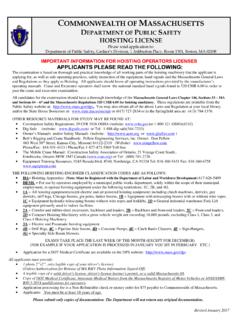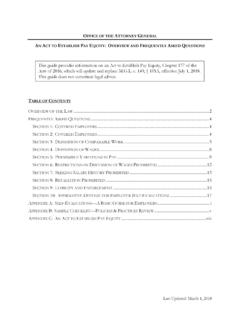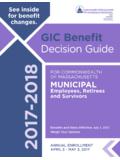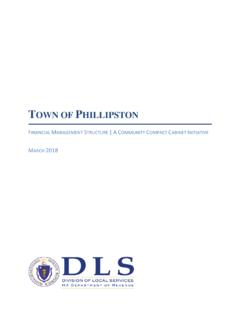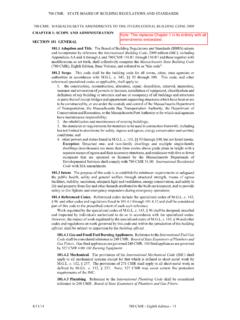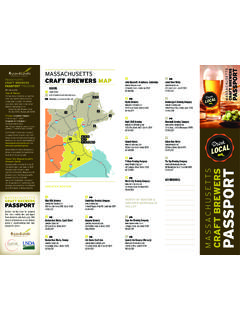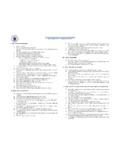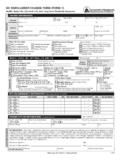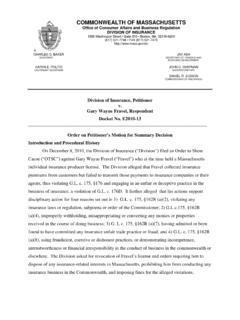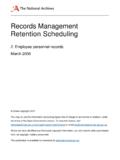Transcription of 105 CMR 300 - mass.gov
1 105 CMR: DEPARTMENT OF PUBLIC HEALTH 105 CMR : REPORTABLE DISEASES, SURVEILLANCE, AND ISOLATION AND QUARANTINE REQUIREMENTS Section : Purpose : Definitions : Diseases Reportable to Local Boards of Health : Case Reports by Local Boards of Health : Confidentiality : Illness Believed to Be Due to Food Consumption : Illness Believed to Be Transmissible Through Food : Illness Believed to Be Unusual : Illness Believed to Be Part of a Suspected or Confirmed Cluster or Outbreak : Reporting of Pediatric Influenza Deaths, Severe and Unusual Illness Due to Influenza, Cases of Antiviral Treatment or Prophylaxis Failure, and Illness Believed to Be Due to Novel Influenza Viruses : Reporting of Infection or Suspected Infection Believed to Be Transmitted by a Transfused Blood Product or Transplanted Organ, Tissue or Tissue Product : Reporting of Animal Diseases with Zoonotic Potential by Veterinarians : Declaring a Disease or Condition Immediately Reportable, under Surveillance and/or Subject to Isolation and Quarantine: Temporary Reporting, Surveillance and/or Isolation and Quarantine : Diseases Reportable by Local Boards of Health to the Department : Laboratory Findings Indicative of Infectious Disease Reportable Directly to the Department by Laboratories : Reporting of Antimicrobial Resistant Organisms and Cumulative Antibiotic Susceptibility Test Results (Antibiograms) : Submission of Selected Isolates and Diagnostic Specimens to the State Public Health Laboratory.
2 Reporting of Certain Negative and Indeterminant Diagnostic Tests Associated with Ascertainment of Infection Status : Laboratory Findings Indicative of Infectious Disease Reportable Directly to the Department by Point of Care Testing : Potential Exposures to Certain Infectious Agents in Clinical Laboratories and Research Settings Reportable Directly to the Department : Diseases Reportable Directly to the Department : Reporting Work-related Disease Outbreaks : Joint Authority with Department of Labor and Workforce Development : Surveillance and Control of Diseases Dangerous to the Public Health : Access to Medical Records and Other Information : Surveillance of Diseases Possibly Linked to Environmental Exposures : Surveillance of Injuries Dangerous to Public Health : Isolation and Quarantine Requirements : Procedures for Isolation and Quarantine : Purpose The purpose of 105 CMR is to list diseases dangerous to the public health as designated by the Department of Public Health and to establish reporting, surveillance, isolation and quarantine requirements.
3 105 CMR is intended for application by local boards of health, hospitals, laboratories, physicians and other health care workers, veterinarians, education officials, recreational program health service providers, food industry officials, and the public. : Definitions Airborne Precautions. Measures designed to reduce the risk of transmission of infectious agents that may be suspended in the air in either small particle aerosols or dust particles ( droplet nuclei <= 5 microns). Patients in health care facilities must be given a private room with special air handling and ventilation (negative pressure with respect to the rest of the facility), and an appropriate level of respiratory protection is necessary when entering the patient s room. 105 CMR: DEPARTMENT OF PUBLIC HEALTH : continued Board of Health or Local Board of Health. The appropriate and legally designated health authority of the city, town, or other legally constituted governmental unit within the Commonwealth having the usual powers and duties of the board of health or health department of a city or town.
4 Carrier. An individual who can tolerate an infection so as not to become ill, yet is able to transmit the disease-causing organism to cause infection and illness in others. Case or Patient. One who is ill, infected, injured or diagnosed with a reportable disease or injury. Cluster. See 105 CMR : Outbreak or Cluster. Communicable. Ability of an infection to be transmitted from one person or animal to another. Contact. A person who has been in such association with an infected person or animal or with a contaminated environment as to have had exposure capable of transmitting the infection to that person. Contact Precautions. Measures designed to reduce the risk of transmission of infectious agents that can be spread through direct contact with the patient or indirect contact with potentially infectious items or surfaces. Gloves and gowns are required for all patient contact and contact with the patient s environment; strict hand hygiene practices must also be applied.
5 Counseling. Process by which individuals and groups are advised as to how to promote, maintain and/or restore health. Methods and procedures used in counseling must take account of the ways in which people develop various forms of behavior, of the factors that lead them to maintain or to alter their behavior, and of the ways in which people acquire and use knowledge. Date of Last Exposure. That point in time when exposure that would be expected to provide an opportunity for transmission of infection between a case or carrier and a susceptible person ends, or point in time when a case or carrier is no longer capable of transmitting illness or infection to others, whichever was more recent. Department. The Massachusetts Department of Public Health. Disease. An abnormal condition or functional impairment resulting from infection, metabolic abnormalities, physical or physiological injury or other cause, marked by subjective complaints, associated with a specific history, and clinical signs and symptoms, and/or laboratory or radiographic findings (compare 105 CMR : Illness).
6 Disease Event. An occurrence of a reportable disease or laboratory evidence of infection reported to a board of health or the Department and entered into the disease surveillance and case management system, MAVEN. Disease Surveillance and Case Management System. MAVEN, a secure electronic system utilized by the Department and local boards of health to monitor or respond to diseases dangerous to the public health. MAVEN is maintained by the Department. Droplet Precautions. Measures designed to reduce the risk of transmission of infectious agents via large particle droplets that do not remain suspended in air, usually generated by coughing, sneezing or talking. Masks must be used, but gowns, gloves and special air handling are not generally needed. Enteric Precautions. Measures designed to prevent direct or indirect fecal-oral transmission of disease. Gowns must be worn if soiling is likely, and gloves must be worn for touching contaminated materials; strict hand hygiene practices must also be applied.
7 Masks are not indicated. Exposure. Proximity to, and or contact with, a source of an infectious agent with potential for acquisition of the infection. 105 CMR: DEPARTMENT OF PUBLIC HEALTH : continued Food. Any raw, cooked or processed edible substance, ice, beverage, medications, or ingredient used or intended for use or for sale in whole or in part for human consumption via the alimentary tract. Food Handler. Any person directly preparing or handling food. This could include the food handling facility owner, individual having supervisory or management duties, person on the payroll, family member, volunteer, person performing work under contractual agreement, or any other person working in a food handling facility. Food Handler also includes any person handling clean dishes or utensils. Any person who dispenses medications by hand, assists in feeding, or provides mouth care shall be considered food handlers for the purpose of 105 CMR In health care facilities, this includes those who set up trays for patients to eat, feed or assist patients in eating, give oral medications or give mouth/denture care.
8 In day care facilities, schools and community residential programs, this includes those who prepare food for clients to eat, feed or assist clients in eating, or give oral medications. Food Handler does not include individuals in private homes preparing or serving food for individual family consumption. Food Handling Facility. Any fixed or mobile place, structure or vehicle, whether permanent, seasonal or temporary, in which food is prepared, processed, stored or held for sale, whether at retail or wholesale, or for service on the premises or elsewhere; or where food is served or provided to the public or segment of the public with or without charge. Food Handling Facility does not include private homes where food is prepared or served for individual family consumption. Food Poisoning. Poisoning that results from eating foods contaminated with toxins. These toxins may occur naturally, as in certain mushrooms or seafoods; they may be chemical or biologic contaminants; or they may be metabolic products of infectious agents that are present in the food.
9 Health Care Provider. As defined in c. 111, 1: any doctor of medicine, osteopathy, or dental science, or a registered nurse, social worker, doctor of chiropractic, or psychologist licensed under the provisions of c. 112, or an intern, or a resident, fellow, or medical officer licensed under c. 112, 9, or a hospital, clinic or nursing home licensed under the provisions of c. 111 and its agents and employees, or a public hospital and its agents and employees . Health Care Worker. One who provides direct care to patients or who works in a setting where such care is provided. Hepatitis Syndrome, Acute. Illness associated with symptoms, including but not limited to, jaundice, nausea, vomiting, abdominal pain, and laboratory evidence of liver damage or dysfunction occurring without identified cause or due to an unexpected or unusual cause. Illness. An abnormal condition or functional impairment resulting from infection, metabolic abnormalities, physical or physiological injury or other cause, marked by subjective complaints and clinical signs (compare 105 CMR : Disease).
10 Immunity. Possession of protective antibodies or cellular components sufficient to protect from infection and/or illness following exposure to an infectious agent (see also 105 CMR : Resistance). Incidence. A general term used to characterize the frequency of new occurrences of a disease, infection, or other event over a period of time and in relation to the population in which it occurs. Incidence is expressed as a rate, commonly the number of new cases during a prescribed time in a unit of population. For example, one may refer to the number of new cases of tuberculosis per 100,000 population per year. Invasive Infection. Infection involving the bloodstream or internal organs, not including infection of the skin or mucous membranes. Invasive infection is usually established by the recovery of an etiologic agent from a usually sterile body fluid or tissue. 105 CMR: DEPARTMENT OF PUBLIC HEALTH : continued Isolation.
